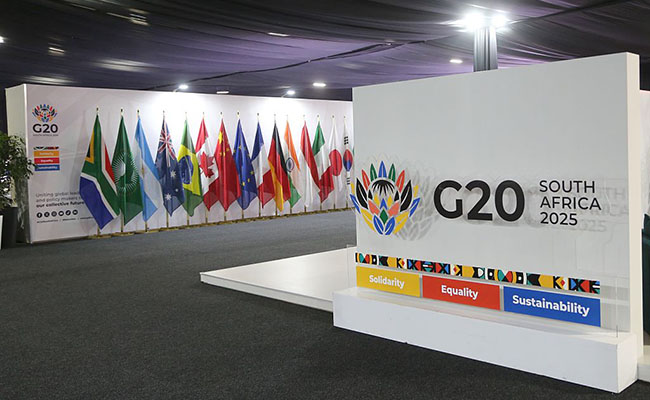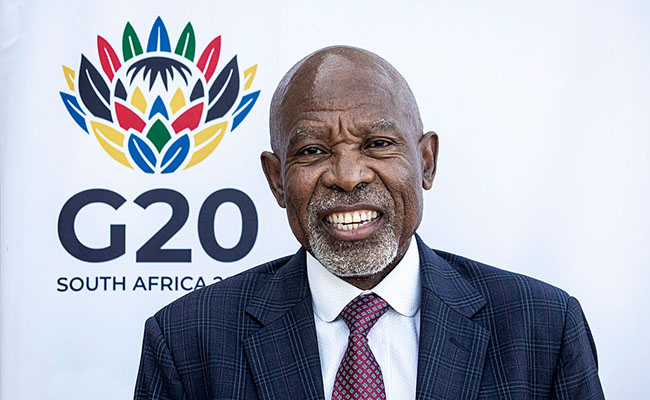For the first time since 2008, South Africa’s government debt as measured against our economic output, will no longer rise.
During this time, government debt ballooned from 27% of GDP to 77.9% – one of the steepest rises in public debt across middle income economies. Not one single fiscal year in fifteen saw a reduction. The country consistently spent more than it earned, even during years of favourable commodity prices. The deepest cost of state capture was not only in the institutional decay that characterised that era, it was the mountain of debt that was accumulated to sustain the captured state. This is why stabilising debt matters, as debt is a symptom of both economic stagnation and political mismanagement.
The National Treasury and Cabinet have now, quite rightly, taken the decision to curtail this mammoth borrowing binge.
In the 2025 Medium-Term Budget Policy statement, Treasury confirmed that public debt will peak this year and decline from next year onwards. This is a dry headline, and one that is easily overshadowed by daily political drama. However, it is one of the most important actions that the GNU has taken.
Partly, it’s because of the context: global sovereign debt has risen at an alarming pace, and amongst advanced economies has already breeched 100% of GDP. The International Monetary Fund forecasts that overall global sovereign debt will reach 100% of global GDP by 2027.
Excessive government debt has historically been characterised as an emerging market problem, but this is no longer the case, as advanced economies are trapped in the cycle of borrowing more to cover rising interest bills, against a backdrop of slowing global growth.
Now, this matters for South Africa. When world debt increases, the global risk-free rate (the baseline cost of capital) rises too. Countries with weaker fiscal positions are punished as the risk-free-rate rises. That’s because investors are able to get better returns in advanced economies, meaning less need to turn to formerly high-yielding emerging markets.
This results in higher borrowing costs, more currency volatilty and declining investor confidence in smaller and emerging economies.
In 2025, South Africa faced a choice. We could have continued to drift along with the rising global tide of debt, or deliberately swim against it. We chose the latter. By committing to peak debt now, we are signalling something critical to potential investors: our country does not intend to become a high-risk borrower. In a world facing more fiscal instability, we needed to move to protect our economy from being repriced upwards in the global risk hierarchy.
When the cost of borrowing rises, the consequences affect every South African. It affects loan repayments, it affects the ability of small businesses to get credit, and it affects the cost of financing critical infrastructure. For the state itself, it determines how much of the national budget is swallowed up by interest payments instead of being spent on critical government services in policing, healthcare, education or trains, roads, dams, hospitals or schools.
Vicious cycle
When a developing country’s debt approaches its national income, a vicious cycle sets in. Firms and markets stop committing to long-term capital because they fear future debt-related instability. Lenders refuse to lend or demand sharply higher interest rates to compensate for the higher risk they are taking. Eventually, these higher rates choke off growth. Slower growth then reduces tax collections, which widens the deficit and forces more borrowing.
This cycle feeds on itself as a kind of fiscal death loop. This is what economists refer to as a “debt-interest spiral”. It is the trap that has consumed countries from Latin America to Southern Europe. Escaping it is costly and avoiding it is far wiser. If we had allowed debt to drift as it has for the past 15 years, we would have fallen into this trap.
Once a country breaches debt-to-GDP above 80%, it becomes extremely difficult to turn it around without extreme cuts to critical services, painful tax hikes, and in the final reckoning, a call to the IMF as lender of last resort when a balance of payments crisis strikes.
Peaking debt is therefore not an end point. It is the end of drift, so that our country can finally begin its long climb out. Debt stabilisation is a necessary (but not sufficient) platform for faster growth through lower borrowing costs and investor confidence. But without it, no reform agenda can succeed.
South Africa has now taken the first step. It is the responsible step; it is the right step. In a world hurtling towards higher debt and greater fiscal volatility, we have quietly chosen a different path. That decision was not accompanied by much political drama or attention, but it is a decision that shows foresight, and it is a critical one for the precious stability it will give our country.
Top image: Finance minister Enoch Godongwana and his deputy, Ashor Sarupen. Gallo Images/Brenton Geach.
Sign up to Currency’s weekly newsletters to receive your own bulletin of weekday news and weekend treats. Register here.













Opinion
PREMIUM
GHALEB CACHALIA: Treasury’s surplus signals return to stability but lacks growth strategy
Primary surplusyet questions on inequality persist
November 24, 2025 at 05:00 am
Ghaleb Cachalia
Columnist
As the dust settles on the medium-term budget policy statement, there is a kind of muted relief, signalling that the grown-ups have returned to the Treasury.
No new general taxes were imposed. A primary surplus of 0.9% of GDP (about R68bn) has been achieved for the first time in years. Debt is stabilising in the mid-70s as a percentage of GDP. Inflation is low, and markets have rewarded this sobriety: the rand is hovering around R17 to the dollar.
This is all welcome. Necessary in terms of basic housekeeping, but by no means sufficient, and far removed from a developmental agenda.
The budget projects a maximum growth rate of 1.8%. To quote analyst Frans Cronjé, that is not a forecast; it is an obituary. No society with unemployment above 30% has ever reduced joblessness, poverty or inequality at such an aneamic growth rate. A developmental state requires a co-ordinated engine of investment, skills and industrial expansion.
The medium-term budget relies instead on an uncomfortable paradox. Government now consumes 35.5% of national income, almost double the norm for healthy middle-income economies. Yet service delivery is chronically weak, infrastructure is collapsing, and productivity growth is flat — reflecting the fiscal footprint of a capable state with the output of a failing one.
READ IN FULL | Enoch Godongwana’s medium-term budget policy statement
The Treasury has dangled the promise of reform through a greater role for private investors, some devolution to lower tiers of government, and the publication of the state’s supplier and tender database.
Transparency is good, but revelation without remedy won’t cut it. Unless it is followed by enforcement, debarment, breaking supplier cartels and rebuilding procurement capacity, publishing tenders merely documents the rot; it does not treat it.
The ideological positioning is also conflicted. The state is gesturing towards market-friendly reforms, while South Africa’s economic freedom rankings have slid dramatically since 1994. We now sit in the mid-1990s globally, not because the state is too developmental but because it is too politicised, too captured and too incapable of delivering what it promises. The result is the worst of both worlds: a state too large to be efficient and too weak to be transformative.
Meanwhile, core questions remain unanswered. How does this budget dent unemployment in any meaningful way? South Africa does not need more low-wage, high-churn service jobs. It needs scalable, upwardly mobile employment in manufacturing, agro-processing, the care economy and energy industries. That requires a genuine industrial strategy, not blind faith that private investment will spontaneously absorb millions of workers.
How does it reduce the Gini coefficient? A primary surplus does not reduce inequality. It only signals that austerity has worked. The medium-term budget does not confront the structural drivers of inequality: asset concentration, education deficits, spatial exclusion and regressive taxation. Without progressive revenue reform or meaningful redirection of spending towards social investment and human capital, inequality remains untouched.
And how does it repair the damage of past austerity? The statement is largely silent on reversing cuts to public infrastructure, early childhood development, municipal capacity and vocational training. All of these are essential to long-term growth and equity. Stabilising debt is important, but stabilising a stagnant economy is hardly a victory.
The Treasury has produced a credible macroeconomic plan without a microeconomic engine. It has delivered stability, but not strategy. The medium-term budget buys time, but it does not use that time. A genuine developmental trajectory requires a jobs compact that co-ordinates public procurement, skills development and industrial incentives; it requires procurement reform with real enforcement; and it requires progressive, targeted tax reform that tackles asset inequality, not just income smoothing.
Above all, it requires a state that can implement its own policies.
• Cachalia, a businessperson and management consultant, is a former DA MP and shadow minister of public enterprises who previously chaired De Beers Namibia.